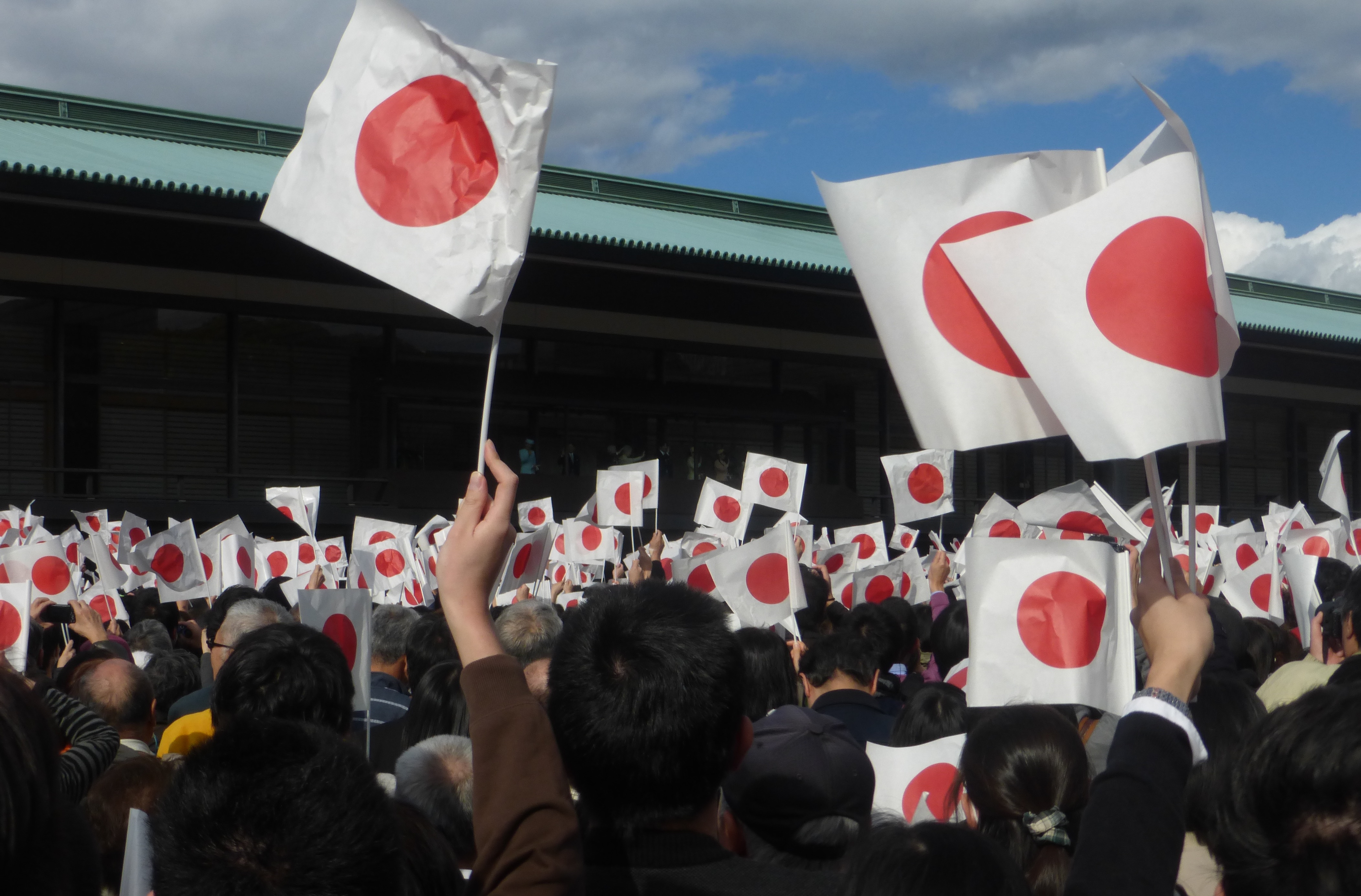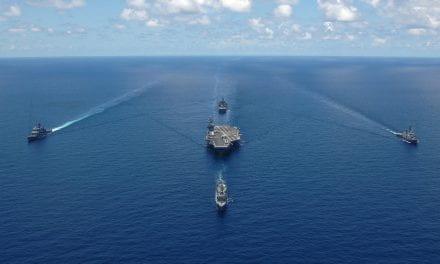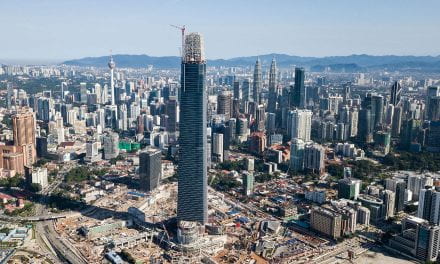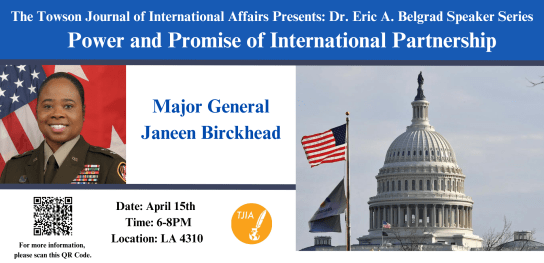By: Cameron Bell*
The recent reelection of Japanese Prime Minister Shinzo Abe has raised concerns about the continuation of Japan’s pacifist nature. As the President of the Liberal Democratic Party, Abe has called for repealing or re-interpreting sections of the Japanese Constitution, specifically Article 9, which forbids the threat and use of force to settle international disputes, and surrenders the right to maintain offensive armed forces.[i] If successful, the repeal of Article 9 would allow Japan to normalize their military, making offensive war constitutional. While there are legitimate concerns about the long-term viability of Article 9 in the present regional environment, which contains an increasingly influential and expansionist Chinese government and an aggressive North Korea, the normalization of the Japanese military and the repeal of Article 9 would destabilize the region, jeopardize Japan’s relationship with at least one regional ally, and challenge Japan’s friendship with its staunchest ally, the U.S.
Since 1949, Japan has operated under a Constitution that was largely written by the United States. In the immediate post WWII environment, the United States and other nations in the region such as Korea and China, feared a militarized Japan. This concern prompted the inclusion of a pacifist clause in the new Japanese Constitution which prohibited Japan from using war as a means to settle international disputes. Furthermore, Article 9 prevented Japan from maintaining offensive military weaponry. While Article 9 has shaped Japanese society, making pacifism one of its more dominant ideals, there has been a growing trend towards normalizing the military in recent years. In 2009 only 41% of voters wanted to revise Article 9, however, by 2013 the same research team from the University of Tokyo found that voters in support of changing Article 9 had risen to 50% and that 89% of members of Japan’s parliament desired a change to Article 9.[ii] Furthermore, this trend has already produced significant changes to Japanese military laws. For example, in 2014 Japanese Prime Minister Shinzo Abe successfully, although on shaky legal ground, circumvented the Japanese parliament and re-interpreted Article 9 to allow ‘collective self-defense’.[iii] This change allowed Japan’s military to be used in defensive multilateral operations for the first time. Additionally, it allowed Japan to greatly expand its military capabilities while still adhering to the accepted interpretation of Article 9.[iv] This ‘re-interpretation’ should not be viewed as a singular, disconnected event, but rather an event that corresponds with the increasingly pro-normalization trend in Japanese society and government. This trend has largely been in response to a changing regional environment and holds the potential for rapid destabilization of the East Asia power structure.
When the Japanese Constitution was created and signed, the region was considerably different than it is today. China was immediately embroiled in a civil war which would last until 1949, and outside of supporting the communists in Northern Korea, even after Mao’s victory over Chiang Kia-Shek’s Nationalists, the new Chinese government was more interested in addressing domestic concerns than in expanding regional influence. Korea was in a state of rebuilding after decades of Japanese colonization and would be involved in a civil war, in part instigated by the Cold War, by June 1950. Additionally, China, Korea, and the United States sought to prevent Japan from ever remilitarizing again. This regional context demanded Japan accept a pacifist constitution. However, now almost 70 years later, the regional context has changed dramatically. China, currently boasting a rapidly growing economy with a GDP over $11 trillion and a growth rate of 6.7%, has begun to exert its influence in the region. This outward expression of Chinese confidence is witnessed in China’s expansion into the Spratly Islands. Even more concerning to Japan, is China’s increased assertiveness in its claims of ownership over the Japanese-administered Senkaku Islands.[v] Furthermore, China’s more regional aspirations are not simply talk: Chinese military expenditures have increased fourfold over the last decade. In 2013, in the waters surrounding the Senkaku Islands, a Chinese warship weapons-locked a Japanese helicopter, and twice in 2014 Chinese military aircraft have intercepted and nearly collided with Japanese surveillance planes over the Islands.[vi] These events along with others have created an environment where many in Japan are beginning to see China and Chinese influence as a threat to the Japanese people. Additionally, China is now seen by many in Japan as an “immoral state that has fundamentally different values” and whose bullying nature threaten Japan’s ability to act independently.[vii]
Moreover, Japan now faces the threat of a nuclear North Korea. Japan agreed to the pacifist constitution when Korea posed no threat to Japan. However, with the rogue state finding increasing success with its nuclear program, Japan is facing a threat which no other people in the world can truly understand. Japan stands alone as the only country to have experienced the use of a nuclear weapon against its people during wartime. It is understandable then that the nuclear threat from North Korea would cause Japan to seek more offensive powers for their military. The recent North Korean missile test which flew over the Japanese Province of Hokkaido has been met with calls from within the Japanese government to acquire cruise-missiles for a preemptive strike of North Korean nuclear facilities.[viii] Whether these specific calls should be taken seriously or not is irrelevant. However, it is clear that due to the North Korean threat Japan is beginning to seriously look at normalization of their military, or at the very least, debating the acceptability of pre-emptive war under the current Article 9 interpretation. Even the less drastic change of adding pre-emptive war as a self-defense measure under the current interpretation would radically change the region’s power structure and threaten stability in the region.
As the evidenced above, Japan faces growing hostile threats within the region, and to confront these threats, granting their military more offensive capabilities is a legitimate option worthy of discussion. However, as part of that discussion Japan should acknowledge and debate the possible negative reactions from their allies and neighboring countries in the region. Reactions that could result in a destabilized East Asia, where the threats facing Japan are exacerbated by the potential loss of a region ally in South Korea, and a potential decrease in support from the United States.
While both are allies of the United States and at least superficially friendly towards each other, South Korea and Japan have a multitude of unresolved issues which overshadow Japan’s normalization efforts. Both historically and today, Japan views the Korean peninsula as a ‘dagger pointed at the heart of Japan’. This geographic fear from Japan, along with the desire for more resources, in part led to the Japanese colonization of Korea in the early 20th century and currently remains a key strategic concern for Japanese defense plans. [ix] From the Korean perspective, Japan has refused to acknowledge war crimes committed against the Korean people during and prior to WWII and the trend towards normalization has many Koreans worried about a revival of Japan’s violent military past.[x] South Korea’s hesitancy to see an offensive Japanese military is understandable given this background, and one should expect the South Korean government to resist any Japanese attempts to grant greater offensive powers to its military. There are many avenues with which South Korea could attempt this, including cutting economic and military ties with Japan, as well as demanding greater military commitments from the United States. These two options could have a potential ‘snowballing’ effect due to Japanese fear of Korea’s geographic position. For example, if South Korea were to cut military and economic ties with Japan due to normalization efforts, one could expect the Japanese government to view South Korea as a regional threat and increase calls for a more robust Japanese military. Furthermore, if the United States were to grant South Korea greater military protection, the Japanese could feel abandoned by their ally and again feel the need for a stronger Japanese military.
Moreover, Japanese efforts to repeal Article 9 will put additional strain on its relationship with the United States. As stated above the U.S. should be expected to try to balance its relationships with South Korea and Japan; however, they must respond to each nation while still considering the region as a whole. Some Japanese government officials view China’s growing economy and increasing economic ties with the United States as a sign that the United States is shifting away from Japan due to the shrinking Japanese economy. While the United States has taken recent steps to allay these fears, the worry remains and has been used to support the repeal of Article 9.[xi] Despite reassurance from the United States, the intertwined relationships (both military and economic), must be considered by the Japanese prior to shifting to a traditional military. If the Japanese normalization process angers China enough, the Chinese could use its economic ties with the U.S. to exert influence on American policymakers to either control Japan and halt the shift toward offensive capabilities or to weaken its protection commitments to the nation. This would worsen Japans position in the region and perhaps ironically force it to normalize faster and more aggressively, further destabilizing the region. Japan’s military conversion will undoubtedly affect U.S.-Japanese relations; whether that change will favor Japan or not is difficult to predict. However, as Japan debates the idea of normalization, the discussion must include the potential loss of allies such as South Korea, a weakening of its relationship with the United States and a destabilization of the East Asian region.
The recent elections were an overwhelming success for Prime Minister Shinzo Abe and the Liberal Democratic Party, whose platform calls for more offensive capabilities for the Japanese military. Prime Minister Abe and the LDP now control enough parliament seats to unilaterally change the Japanese Constitution and give the Japanese military more offensive capabilities.[xii] Despite this power, Prime Minister Abe has walked back his initial timeline of changing the constitution by 2020 so the Japanese people can debate the topic and, Abe expects, come to support the repeal of Article 9 and the normalization of the Japanese military.[xiii] This time should be used to debate the regional implications of normalization. There are legitimate reasons for a more offensive Japanese military. The regional environment has changed dramatically since the creation of the Japanese Constitution and Article 9. Japan faces legitimate and growing threats which a purely defensive military may not be able to confront. However, the Japanese government and people must also consider the negative outcomes that may occur due to normalization. By shifting to an offensive military, Japan risks destabilizing the region. They may lose a key regional ally in South Korea, and could place the United States in a position it may have to weaken its commitments to Japan to protect its own economy and people. These concerns must be addressed and debated fully for the Japanese people and government to make an informed decision.
However, this is not an either-or situation. The Japanese government should work to address its issues with South Korea while debating Article 9 with its citizens. Given that many Koreans, while angry at Japan for never accepting responsibility for its war crimes, see the current Japanese public as pacifists and not the militaristic Japanese from the WWII era,[xiv] if Japan accepted responsibility for its previous war crimes against the Korean people, it could garner support from the Korean populace. Due to Japan’s relationship with the U.S., there is not much the Japanese government could do to please the currently expansionistic Chinese government. However, by working with its allies in the region, Japan could make the normalization process more appealing to U.S. policymakers despite the expected Chinese response. This slower approach to normalization, while addressing issues with both Korea and the United States, would allow Japan to strength ties with its allies while also uniting more Japanese behind the normalization process and staving off some of its destabilizing effects. This should be a time of conversation amongst the Japanese people and between Japan and its regional allies. Unilaterally normalizing its military will be massively destabilizing to the region and likely push the region closer to war; however, approaching the normalization process through working with its regional allies and addressing past grievances could make the normalization process work in favor of Japan and its allies.
[i] Paul J. Leaf, “Promise and Potential Peril: Japan’s Military Normalization”, The Diplomat. Accessed: 11/5/17 https://thediplomat.com/2014/09/promise-and-potential-peril-japans-military-normalization/.
[ii] Lina Sieg, “Japan voters split on revising pacifist constitution: poll”, Reuters. Accessed: 11/5/17 https://www.reuters.com/article/us-japan-politics-constitution/japan-voters-split-on-revising-pacifist-constitution-poll-idUSBRE90R01M20130128.
[iii] Jeffery P. Richter, “Japan’s Reinterpretation of Article 9: A Pyrrhic Victory for American Foreign Policy?” Iowa Law Review Vol. 101, Issue 3 (March 2016) p. 1244-1247.
[iv] Adam Liff, “Japan’s Defense Policy: Abe the Evolutionary”, The Washington Quarterly Vol. 38, Issue 2 (2015) p. 85-86.
[v] Central Intelligence Agency, “The World Fact Book”, United States Government. Accessed: 11/6/2017 https://www.cia.gov/library/publications/the-world-factbook/geos/ch.html
[vi] Paul J. Leaf, “Promise and Potential Peril” https://thediplomat.com/2014/09/promise-and-potential-peril-japans-military-normalization/.
[vii] Shogo Suzuki: “The Rise of the Chinese ‘Other’ in Japan’s Construction”, The Pacific Review Vol. 28, Issue 1. (March 2015) p. 111-112.
[viii] Motoko Rich, “A Pacifist Japan Starts to Embrace the Military”, The New York Times (August, 2017) Accessed: 11/6/2017. https://www.nytimes.com/2017/08/29/world/asia/korea-missile-japan-pacifism.html.
[ix] Christian Wirth “Power’ and ‘stability’ in the China—Japan—South Korea Regional Security Complex”, The Pacific Review Vol. 28, Issue 4, (2015) p. 565.
[x] Seong-ho Sheen, “A Korean View: Japan’s Constitutional Revision Debate”, Council of Foreign Relations: Asia Unbound. (May, 2017) Accessed: 11/6/17. https://www.cfr.org/blog/korean-view-japans-constitutional-revision-debate.
[xi] Aaron Menenberg, “Collective Defense: Abe’s New Security Plan”, World Affairs Vol. 177, Issue 3 (September/October 2014) p. 68-69.
[xii] “After his election success, Japan’s leader takes aim at pacifism”, The Economist (Oct. 26th, 2017). Accessed: 11/6/17 https://www.economist.com/news/asia/21730551-mr-abe-wants-japan-be-normal-military-power?zid=306&ah=1b164dbd43b0cb27ba0d4c3b12a5e227.
[xiii] Sheila Smith, “Abe’s Win and Japan’s Constitutional Debate”, Council of Foreign Relations (October 27th, 2017) Accessed: 11/6/17 https://www.cfr.org/expert-brief/abes-win-and-japans-constitutional-debate.
[xiv] Seong-ho Sheen, “A Korean View: Japan’s Constitutional Revision Debate”, Council of Foreign Relations: Asia Unbound. (May, 2017) Accessed: 11/6/17. https://www.cfr.org/blog/korean-view-japans-constitutional-revision-debate.
*Disclaimer: The content contained in the following material is the sole ownership of the author and does not reflect the views of the Towson University Journal of International Affairs nor Towson University in any respect whatsoever.







